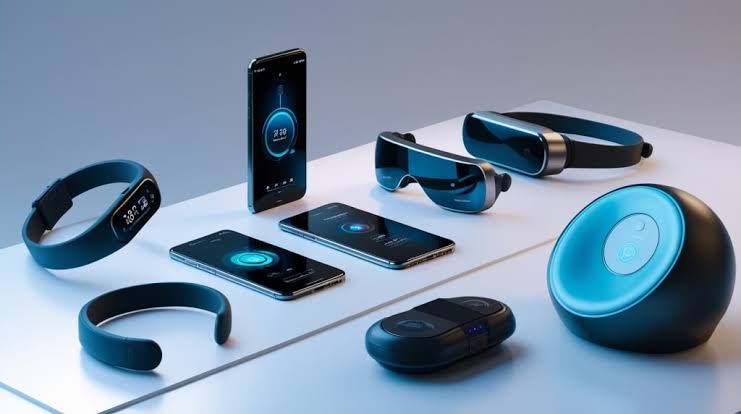The Best Smartphones for Photography Enthusiasts in 2025: Smartphone photography has evolved dramatically over the past decade. In 2025, devices are not just communication tools they are powerful, pocket-sized cameras capable of producing professional-grade photos and videos. With AI enhancements, multi-lens arrays, large sensors, and computational photography, photography enthusiasts can now capture stunning images without needing a DSLR.

In this guide, we break down the top smartphones for photography in 2025, highlighting what makes each one exceptional, and helping you choose the best fit for your style and needs.
Top 7 Smartphones for Photography in 2025
1. Apple iPhone 16 Pro Max
Best for: All-around photography & videography
Key Features:
- Triple-lens system: 48MP wide, 12MP ultrawide, 12MP periscope telephoto (6x zoom)
- 48MP ProRAW & ProRes video with spatial video
- New AI scene detection & Smart HDR 6
- Improved Night Mode with Photonic Engine 2
- Tetra Prism lens for natural optical zoom
- 8K video recording with cinematic stabilization
Why it stands out:
Apple continues to refine its computational photography engine, delivering remarkably true-to-life colors and outstanding low-light performance. The new Photonic Engine 2 processes multiple exposures in milliseconds, giving crisp detail even in dynamic lighting conditions. Apple’s ecosystem also makes editing and sharing a breeze.
2. Samsung Galaxy S25 Ultra
Best for: Zoom capabilities and versatility
Key Features:
- Quad-lens array: 200MP wide, 50MP periscope (10x), 12MP ultrawide, 10MP telephoto
- Laser autofocus with Super Night mode
- RAW Expert Mode with Adobe Lightroom integration
- AI scene optimizer 2.0
- 100x Space Zoom with improved clarity
Why it stands out:
Samsung’s 200MP sensor uses pixel binning to provide ultra-detailed shots in daylight and noise-free images at night. The dual telephoto lenses allow true optical zoom at both 3x and 10x, outperforming most rivals in versatility. The Expert RAW mode allows complete manual control, perfect for enthusiasts who like to tinker.
3. Google Pixel 9 Pro
Best for: Computational photography & true-to-life images
Key Features:
- Triple-camera setup: 50MP main, 48MP ultrawide, 48MP telephoto (5x zoom)
- Tensor G4 chip for advanced AI photo processing
- Magic Editor 2.0 & Real Tone 3.0
- Ultra HDR with 10-bit color
- Long exposure mode & astrophotography
Why it stands out:
Google Pixel cameras are famous for their computational excellence. The Pixel 9 Pro continues this legacy with advanced AI correction, skin tone accuracy, and unmatched Night Sight. Magic Editor 2.0 lets users effortlessly move or resize subjects post-shot, offering editing power previously limited to Photoshop.
4. Sony Xperia 1 VI
Best for: Manual control & professional-grade photography
Key Features:
- Triple-lens: 48MP wide, 12MP ultrawide, 12MP variable telephoto (3.5x–7.1x optical)
- Real-time Eye AF for humans and animals
- Pro Camera App with full manual control
- True 21:9 4K OLED display for editing
- Zeiss optics with T* coating
Why it stands out:
Targeted squarely at photography professionals, the Xperia 1 VI offers the closest smartphone experience to using a DSLR. The Pro Camera app emulates Sony Alpha cameras, allowing manual shutter speed, ISO, focus peaking, and white balance adjustments. Its optical zoom range provides true variable zoom, not just stepped lenses.
5. Huawei P70 Pro+
Best for: Low-light and portrait photography
Key Features:
- Ultra Vision Leica Quad Camera with RYYB sensor
- 50MP main + 40MP monochrome + 64MP telephoto + 13MP ultrawide
- XD Fusion Pro Image Engine
- Night mode AI 3.0 with real-time noise reduction
- HDR Vivid Mode for portraits
Why it stands out:
Despite limited access to Google services, Huawei continues to innovate in camera hardware. The RYYB sensor captures more light than standard RGB sensors, making it a low-light king. The monochrome sensor contributes to stunning black-and-white photography with rich contrast and dynamic range.
READ ALSO: How to Stay Safe from Phishing Attacks in 2025
Key Features to Consider for Photography Phones
- Sensor Size: Larger sensors (like 1-inch) capture more light and detail.
- Optical Zoom: True optical zoom lenses provide superior image quality over digital zoom.
- AI & Computational Photography: Features like Google’s Magic Editor or Apple’s Photonic Engine can dramatically improve final images.
- RAW Support: Shooting in RAW gives more control in post-processing.
- Video Features: High-resolution video, stabilization, and ProRes/Log support matter if you shoot video content.
- Manual Controls: For enthusiasts who want DSLR-like control, Pro modes are a must.
FAQs
What is the best smartphone for low-light photography in 2025?
The Huawei P70 Pro+ and iPhone 16 Pro Max lead the pack, with advanced sensors and AI processing that excel in dark environments. Google’s Night Sight is also excellent for capturing detail with minimal noise.
Which phone offers the best zoom?
The Samsung Galaxy S25 Ultra offers the best zoom experience with dual optical lenses (3x and 10x) and impressive 100x digital zoom backed by AI stabilization.
Do I need a 200MP sensor?
Not necessarily. A 200MP sensor can be useful for cropping and retaining detail, but effective image processing, sensor size, and lens quality are more important. Google and Apple use lower-megapixel sensors with exceptional results.
Which smartphone is best for manual controls?
The Sony Xperia 1 VI is the top choice for those who want full manual control similar to DSLR settings. The Xiaomi 15 Ultra and Huawei P70 Pro+ also offer extensive pro modes.
Can smartphones replace DSLRs for professional work?
In many cases, yes especially for social media, event photography, and even some commercial use. While DSLRs still win in sensor size and lens variety, smartphones like the iPhone 16 Pro Max and Xiaomi 15 Ultra are closing the gap rapidly.


